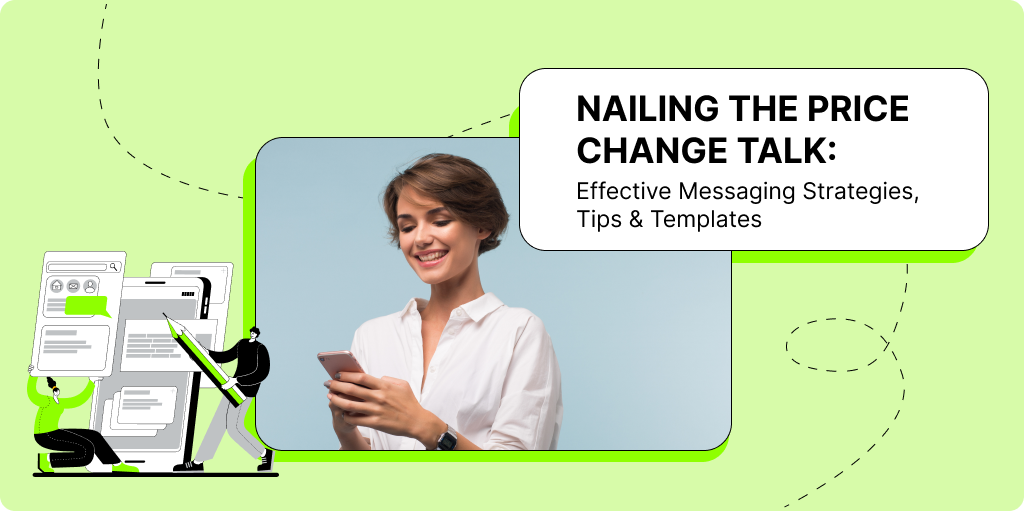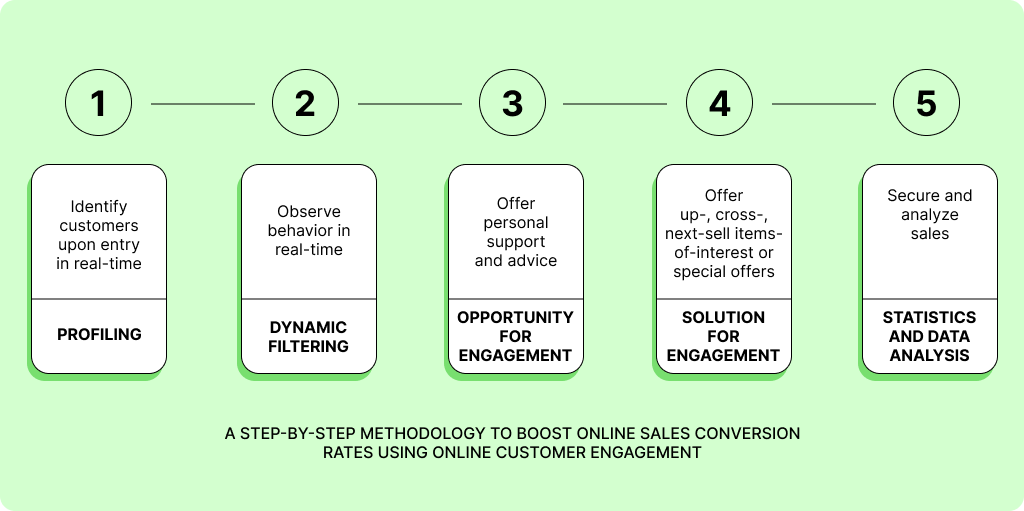 Nailing the Price Change Talk: Effective Messaging Strategies, Tips & Templates
Nailing the Price Change Talk: Effective Messaging Strategies, Tips & Templates
Learn how to effectively communicate price changes to your customers with our expert tips. Balance customer trust and loyalty while scaling your business!

Customer engagement is a vital component of running a successful business. Selling items or services is insufficient for attracting and retaining loyal consumers. It takes consistent effort to engage with your audience and establish long-term commercial partnerships.
In this article we’ll describe the best ways to develop a one-of-a-kind clients engagement strategy and provide tools for generating and measuring audience engagement.
Customer engagement enhances the clients experience via pleasant interactions and business activities. Customers may be engaged through a variety of methods, including social media business accounts and your company blog. However, engagement extends beyond acquiring customers. In order to develop your brand and establish a loyal, engaged audience, you must constantly nurture and deepen client connections.
Even though they are the driving force in the beginning, your products and services should not be the sole value you provide to clients. To increase customer happiness and loyalty, create a content strategy that generates unique, high-quality items that consumers can readily access.

Keep these considerations in mind when you build your customer engagement strategy.
The duration and character of a customer’s association with a brand or firm are referred to as the customer life cycle. Marketers should strive to extend and flourish the customer’s life cycle as much as feasible.
You should maintain and continually improve the customer journey in order to nurture a healthy customer life cycle. To keep customers interested, use customer retention methods.
And take the relationship beyond the scope of a single transaction.
Although purchase history is the most visible marketing campaign intelligence aside from fundamental marketing demographics, it is insufficient. You should also examine the following information:
This frequently neglected information will provide results since it is intrinsically valuable, and your rivals are unlikely to consider it.
There is a wealth of information that marketers cannot or do not have access to when creating client communications. Behavioural data and online-offline profitability, for example, are frequently disregarded. With the increasing rise of digital platforms, marketers must leverage all available consumer information to remain competitive.
Small firms should think like big enterprises and act with the resources at their disposal. For example, they may analyze data on a lesser scale, such as on a spreadsheet rather than a custom-built system, but this analysis is still more helpful than hunches or preconceived notions about your target client.
If acting on that data involves sending individual emails or making one-on-one conversations, do it. At the very least, you’ll know you’re reaching out to your ideal consumer. Small and medium-sized enterprises have the edge over large corporations in that they can respond to insights and market trends more rapidly. Large firms, on the other hand, may find it difficult to present facts and develop ideas that resonate with senior leadership, as well as to break institutional tendencies.
These difficulties do not confront solopreneurs, entrepreneurs, or small business proprietors. Make use of your adaptability and experiment wisely to learn what matters to your clients.
While many firms seek to create a complete consumer profile, don’t overlook freely accessible data. It’s simple to collect information about how customers engage with your business using Facebook analytics and other free tools.
When looking for further information, consider directly asking customers. Most people will gladly share knowledge for anything of worth. consumer loyalty programs, social media interactions, and consumer surveys, for example, can be significant data sources.
Instead of waiting for your consumers to come to you, go to them. An interested customer is more likely to spend or continue to spend. Determine the most valuable moment to reach out to your most significant clients throughout their customer life cycles and purchase cycles.
The challenging assumption is a corporate concept as well as a marketing strategy. Don’t assume that approaches and practices that have been effective in the last year will continue to be successful in the future. Reframe your existing data and insights on a regular basis to guarantee you have (and, more importantly, act on) the best available data.
Developing a customer engagement marketing strategy is critical for establishing long-term relationships with your target audience. Customers must feel appreciated and valued for reasons other than the money they spend. Brands that demonstrate a commitment to their consumers’ requirements will be rewarded with engaged, loyal customers.
Furthermore, consumer engagement helps to distinguish your company from others in your field. Developing a customer engagement strategy is critical since it is what differentiates your brand from the competition.
Channels and tools, like the following, can help you increase consumer engagement: